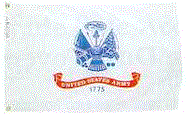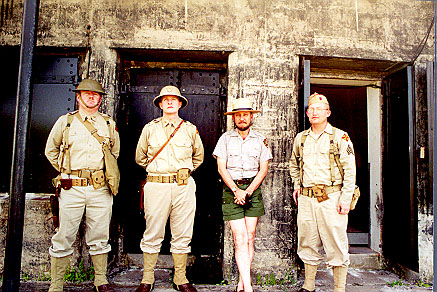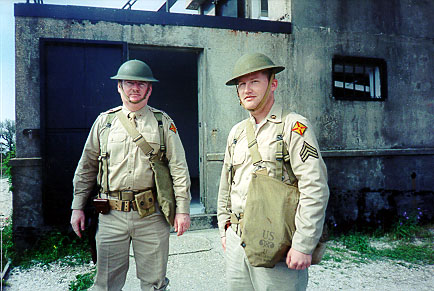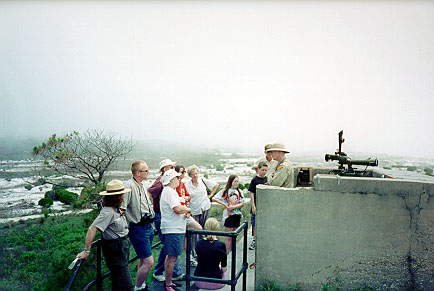

Headquarters
Army Ground Forces
Association
Events
Coast Artillery Living History at Fort Pickens, FL

The weekend of 15-16 April 2000 the National Park Service (NPS) hosted the Army Ground Forces Association (AGFA) as they presented "The 13th Coast Artillery Regiment Open House" at Ft. Pickens, Florida. Personnel participating included Andy Bennett, John Lassiter, Marty Morgan and Shawn Welch portraying various living history roles of the 13th Coast Artillery Regiment stationed at Ft. Pickens in the spring of 1941. John Lassiter, the AGFA event coordinator, and Park Ranger David Ogden worked closely over a period of four months to bring this program to life.

The program was organized using tours beginning at the Harbor Defense Command Post (HDCP) at Battery Worth at 1000, 1200, 1400 and 1600 hours on Saturday and 1000 and 1200 hours on Sunday. At the HDCP visitors received an "in-brief" on the Harbor Defenses of Pensacola and were able to view a good portion of Ft. Pickens from the relatively high vantage point offered by HDCP. Within the HDCP was an M1910A1 azimuth instrument and EE-91 common battery fire control telephone.

From the HDCP the tour proceeded to Battery Cooper, where a 6-inch disappearing gun is preserved. There were several stations for interpretation at Battery Cooper, the first of which was located at the gun. Within the entrance to the main gallery of the battery, an ammunition display consisting of 37mm, 3-inch, and 90mm cases and projectiles, 6-inch armor piercing and HE projectiles, 6-inch powder bags, a 16-inch powder bag (filled with wood dowel "powder grains"), inert MK-XV and M-30 primers and charts describing various projectile, fuse and primer types were displayed. Tour participants moved from this station to the next station inside the magazine, which consisted of the NPS plotting board exhibit, along with various charts depicting the fire control system, theory of fire control, and types of plotting room instruments. A display of small arms was the next station. Weapons displayed included M1903 rifles, an M1A1 "tommy gun", M2 .22 cal Springfield training rifle, and an M1917A1 water-cooled .30 caliber Browning machinegun belonging to the NPS.

A full communications suite was displayed including EE-3B, EE-4, EE-5 and EE-8 field telephones and EE-71 and EE-91 common battery fire control telephones, all functioning and connected to either a BD-71 (six lines) or a BD-72 (twelve lines) switchboard. Also part of the communications display was a functioning Time Interval apparatus with a cutout switchbox. Three bells were connected to the apparatus, with one located at the plotting board display, one near the 6-inch gun mount, and one in the Battery Commander's / B' Station. Two radios of the era were also present, a BC-611 and BC-222 which represent the first two walkie-talkies adopted by the Army.

The Battery Commander's station included a M1915 Battery Commanders scope and a M1910A1 azimuth instrument complete with electrical panel board and rheostat to control the lights and reticule illumination. Signal Corps equipment consisted of two EE-91 telephones representing the B' line and the Intelligence line (both connected to the switchboards inside the magazine), and a Time-Interval bell functioning from the Time-Interval Apparatus inside the battery.

Each tour lasted almost two hours with all four members of the team involved from the morning through the evening. Over 250 visitors attended the tours and many of the Park Rangers also visited the exhibit. The public's reception of the event was very positive, and several families that attended Saturday tours returned on Sunday to spend more time viewing the exhibits and visiting with AGFA members. The National Park Service hosts were also very pleased with the outcome of the event and have invited the Army Ground Forces Association to return in 2001 for another "13th Coast Artillery Regiment Open House".



Copyright 2000. All rights
reserved.











